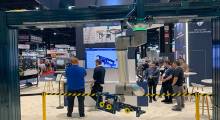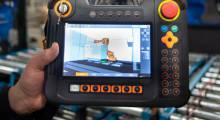I’ve been writing about materials handling off and on for more than 25 years. I can honestly say that now is one of the most interesting times I can remember for our industry: from materials handling automation to RFID and multi-modal data collection to advancements in lift truck technology, exciting things are happening. One of the most exciting is how end users are beginning to think strategically about their warehouses and distribution centers, and then looking for new solutions to meet their goals.
I received an e-mail from the vice president of distribution for a mid-size retailer today. He had read our Big Picture in the August issue on robotics and noted that he believes “robotics is the future of distribution.” He wrote because he was interested in using robotic picking arms as an alternative to the traditional pick-to-light system he was using in one of his DC’s. He had been trying to find a robotic piece picking solution in operation in a distribution environment, and we had a photo of one, provided by Axium (http://www.axiumsolutions.com), in the story. Could I help?
For the heck of it, I gave him a call, and we had a great conversation about the state of robotics in materials handling today. He had two observations that I found fascinating.
The first had to do with ROI. I told him that robotics made a lot of sense to me conceptually. But since systems integrators don’t share the costs of technology and end users don’t share their operating costs, I had no idea if the technology made economic sense. “I have no doubt there’s an ROI,” he told me. He’s been looking at robotics for nearly three years, and during that time, he said, the cost of the technology has come down significantly and the software has gotten more robust. If he can find an application to do what he wants it to do, he felt certain that the justification would be there.
I assumed he wanted to replace labor. While that was true, it wasn’t because of the hourly cost of labor. Rather, it was the reliability of labor. “I’ve been in distribution for more than 20 years,” he said, “and I’ve never seen an environment like this, where it’s such a challenge to find and keep dependable labor that is willing to work in a distribution center.”
Would he like to employ people in those operations? Sure. But in the absence of a reliable work force, he’ll take a reliable robotic picking solution any day. I hadn’t thought of reliability as a key selling point to materials handling automation before, but it makes a lot of sense.
About the Author
Follow Robotics 24/7 on Linkedin
About the Author
Follow Robotics 24/7 on Linkedin
Article topics
Email Sign Up















